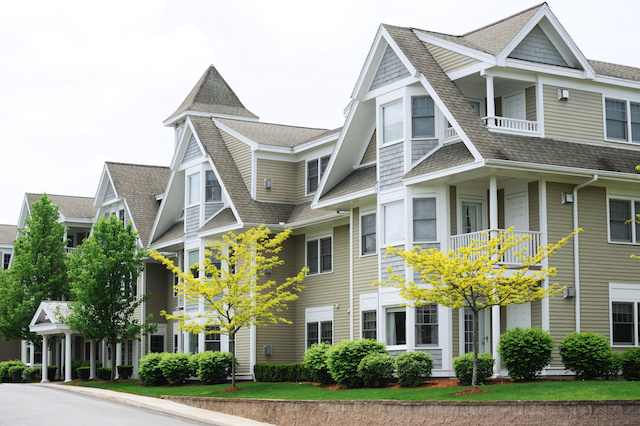Recognizing the Function of Condo HOA in Community Management
Recognizing the Function of Condo HOA in Community Management
Blog Article
How Condo HOA Controls Shared Rooms and Enhances Neighborhood Harmony
The governance of shared areas within a condo organization plays a pivotal role in fostering community communication and keeping building values. Through the facility of comprehensive standards, the Apartment HOA not just manages making use of communal amenities yet also promotes a society of respect and responsibility amongst citizens. By attending to possible disputes and assisting in open discussion, the HOA can improve the general living experience. The efficiency of these techniques frequently pivots on active participation and dedication from all members, elevating concerns concerning the finest approaches to attain long lasting area consistency.
Duty of the HOA
The property owners organization (HOA) acts as the governing body for condo neighborhoods, playing a vital function in keeping the property and advertising a cohesive living environment. It is in charge of establishing and imposing neighborhood rules and guidelines, which are developed to preserve the visual value and functionality of the shared area. This administration ensures that all citizens stick to a standard set of expectations, cultivating a feeling of unity amongst diverse property owners.
In Addition, the HOA takes care of the financial aspects of the community, including budgeting, gathering fees, and maintaining common locations. This monetary oversight is essential in making sure that necessary maintenance and renovations are lugged out promptly, improving property values over time. The HOA also acts as an intermediary in between citizens and outside entities, such as city government and service providers, dealing with communal concerns properly.
In Addition, the HOA usually arranges neighborhood events and programs, motivating neighborly interactions and constructing partnerships amongst citizens. By assisting in open communication and addressing complaints, the HOA adds to a harmonious living environment. Thus, its complex duty is crucial in making certain the smooth procedure and general fulfillment within condominium communities.
Regulations for Shared Rooms
Efficient governance in condo neighborhoods necessitates clear rules for shared rooms, which are crucial for maintaining order and advertising a sense of area among homeowners. These guidelines work as guidelines that ensure everybody can delight in usual areas, such as swimming pools, gardens, and entertainment facilities, without problem.

In addition, sanitation and upkeep criteria are important, frequently stipulating that citizens should cleanse up after themselves and report any type of problems to the home owners' association. By clearly connecting these assumptions, the HOA can encourage and lessen misunderstandings regard among residents.
Eventually, well-defined rules for shared rooms add to the general lifestyle in a condominium neighborhood, allowing homeowners to exist together quietly while delighting in the facilities that enhance their living experience. condo hoa.
Value of Area Guidelines

Community standards play a considerable duty in fostering a cohesive and considerate atmosphere within condominium associations. These standards establish clear expectations for homeowners, advertising a sense of responsibility and shared duty. By marking appropriate habits and practices, community standards assist stop misconceptions and problems among citizens.
Additionally, these guidelines act as a structure for maintaining the aesthetic and useful stability of shared areas. They ensure that all residents abide by standards relating to residential or commercial property upkeep, noise levels, and usage of public facilities. This uniformity not just check over here boosts the visual allure of the community however additionally contributes to total property worths, profiting all property owners.

Dispute Resolution Strategies
Navigating conflicts within a condo association needs an organized strategy to ensure effective and reasonable resolution. Efficient conflict resolution approaches usually start with open communication, encouraging locals to voice concerns in a considerate fashion. Developing a marked network for complaints, such as a pointer box or an on-line discussion forum, can promote this process.
Arbitration is one more crucial method, where a neutral 3rd celebration assists disputing locals get to a mutually acceptable remedy. This approach fosters cooperation and understanding, reducing hostility - condo hoa. The HOA board need to additionally develop you can try this out clear procedures for resolving grievances, ensuring all celebrations understand the steps entailed
Regular dispute resolution training for board members can improve their ability to take care of conflicts efficiently. Using a distinct structure, such as the "Interest-Based Relational Method," assists focus conversations on passions as opposed to placements, promoting a solutions-oriented mindset.
Advantages of Community Consistency
Fostering area harmony within a condo association brings numerous benefits that boost the total living experience for locals. An unified neighborhood encourages partnership and collaboration among neighbors, bring about a more jovial ambience. When locals feel connected and highly regarded, they are most likely to participate in communal activities and join decision-making procedures, resulting in a more powerful sense of belonging.
Additionally, area harmony substantially decreases problems and misunderstandings, which can or else disrupt life. A tranquil atmosphere reduces anxiety and promotes psychological well-being, permitting locals to appreciate their homes completely. Additionally, unified relationships usually equate into enhanced residential property worths, as potential customers are drawn to communities defined by stability and teamwork.
Final Thought
Via the establishment of clear guidelines and area standards, locals are motivated to keep a considerate and accountable environment. Eventually, the efforts of the HOA add to a natural neighborhood, advertising both home worths and total resident satisfaction.
Furthermore, the HOA typically organizes neighborhood events and programs, encouraging neighborly interactions and building connections amongst citizens. By marking appropriate actions and techniques, area standards aid protect against misunderstandings and conflicts among residents.
Additionally, area standards promote reliable interaction amongst citizens and the Homeowners Organization (HOA) Via the facility of clear policies and Recommended Site community standards, residents are encouraged to keep a answerable and respectful environment. Ultimately, the initiatives of the HOA add to a natural neighborhood, promoting both home values and overall resident satisfaction.
Report this page